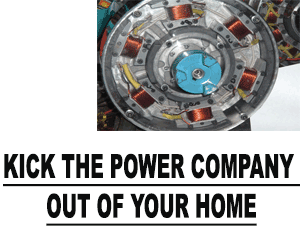OK so you have the solar panels. Now what? Buying the right solar panels is just a first step in making your home run on solar energy.
The next step is to consider how best to integrate the solar panel array with the roof and structure of your home or business.
There are many different technologies and installation options. I’m gonna tell you about two common installation options. If you choose another kind of installation, be aware that of the many design, drainage, warranty, and repair concerns discussed in this article are common to all installation systems.
Ballast solar panel system
If you do not wish to alter the roof of your home or business, one option is the ballast system, which works best on a flat commercial roof. With this installation method, the panels rest on top of the roof. While this is the least expensive option, it has several drawbacks that may factor into your decision.
While most roofs have a 20 year warranty, a ballast mounted solar panel system is only under warranty for 10 years. This system uses rubber boots or cinder blocks to hold the panel array down. The ballast mounting system places excessive weight on the roof, which makes the roof membrane brittle and easily cracked.
Panels are required to be mounted at acute angles, about 0-20 degrees, to avoid destabilization because of the wind.
Whether building new construction to suit ballast-mounted solar or adapting an existing roof, you must consider the design. A ballast mounted solar panel system is less easily adapted to small changes in the pitch of the roof and obstructions and variations in the design.
The design of the roof may need to be modified to accommodate drainage of snow, debris, and water. If you are installing the system on an older roof, be aware that, in case of repair or re-tarring, the whole ballast system will need to be removed.
Solar panel array
A second method attaches the solar panel array to the infrastructure of this roof. This method costs more upfront, but brings strengths you should factor into your cost-benefit analysis.
This system places less dead weight on the roof. Due to the stability of this system, you can increase the efficiency of the system by varying the angle from 5 to 45 degrees, without worrying about the wind creating a sail effect.
The structurally mounted system adapts to the design of any roof, creating a level array around drainage features and design elements. This flexibility allows for covering a larger area on your roof.
While it may sound harmful to attach a system this way, be aware this does not affect the structural integrity of your roof so much as you may think. If you have a central air system, it will have already been incorporated into the structure of your roof, as are ventilation and drainage systems.
Hybrid solar power system
Hybrid solar power systems can also be integrated into most home designs. You can mount a solar panel array in a way that incorporates features of both ballast and structural systems.
To maximize your return on investment, investigate converter and collector options to optimize your solar energy system. While the process may seem daunting, the rewards of solar panel usage include long-term savings, greater efficiency, and a contribution to a brighter future.
I hope this information is helpful and will get you started on turning your life altogether with alternative energy!
Next, I’ll share some facts with you about prefabricated green homes, so don’t miss it!



No comments yet... Be the first to leave a reply!